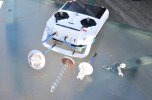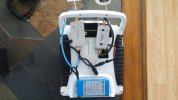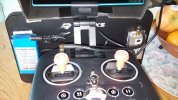This isn't an ad. I just wanted to post this. I find it so cool. Plus, I'm a happy customer.
Covert Drones has a new product. They are now able to put a power amplified antenna system inside your remote. No more bulky Antenna. It is a bit expensive, but if you don't want a bulky antenna hanging off your remote you can have this mod done for no more than $500.00 US.
From Covert Drones, "We are happy to announce a first of its kind amplifier! This dual band (2.4, 5.8ghz) amplifier system is built right into your remote. There are no external antennas to attach, no separate battery sources to charge. "

 www.covertdrones.com
www.covertdrones.com
Covert Drones has a new product. They are now able to put a power amplified antenna system inside your remote. No more bulky Antenna. It is a bit expensive, but if you don't want a bulky antenna hanging off your remote you can have this mod done for no more than $500.00 US.
From Covert Drones, "We are happy to announce a first of its kind amplifier! This dual band (2.4, 5.8ghz) amplifier system is built right into your remote. There are no external antennas to attach, no separate battery sources to charge. "

NEW** Covert Drones stock antenna built-in dual band amplifier
ALERT! NEW PRODUCT! Please be aware that this mod is needed on the remote AND, the drone. One amplifier is put into your remote and, the other into your drone. The mod includes both installs. This mod cannot be installed into all drones so please look at the list for compatibility. The...













